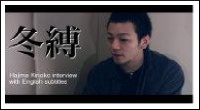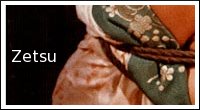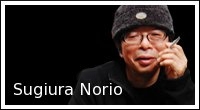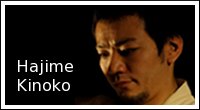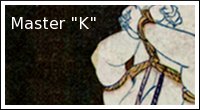Sakura Symbolize the Ephemeral Nature of Life

By now, Esinem and Electric Fairie should be back in London. Mark and Lani are leaving today to return to Australia.
I didn't have a chance to meet up with Mark and Lani but I did get together with Esinem and Electric Fairie a few times -- and they were good times.
Everyone came at the perfect moment to see the famous cherry blossoms. This year was a good one for the legendary sakura. The weather warmed up a bit and they began to bloom. And boy did they bloom, right around the time of Esinem's arrival in Osaka.
Hit the Read More link for additional coverage and videos.
The weather stayed nice. In some past years, the poor things would bloom early due to a few unseasonably warm days. Then the cold would return, along with wind and rain. These conditions would devastate the delicate flowers and they would end up on the ground much too soon.
Sakura are deeply symbolic in Japan. According to Wikipedia, they symbolize the "ephemeral nature of life." They bloom quite suddenly and have a brilliant, albeit short, life. They disappear almost as quickly as they appear. Some kamikaze pilots had sakura painted on the side of their plane. Life is miraculous and beautiful. But it always comes to an end. Sometimes much too soon -- and suddenly.
And so it was with our visiting gaikokujin. Their timing was perfect and the sakura this year cooperated beautifully. But it all must come to an end.
However, not to despair. Unlike a suicide pilot, we have next year to look forward to. And the next.
 Speaking of Esinem, he mentioned in one of his posts some of the controversies in the West concerning such things as the terms shibari and kinbaku. I'm not going to go into a lot of detail here. You either know about these things or you don't. If you don't, you may consider yourself fortunate.
Speaking of Esinem, he mentioned in one of his posts some of the controversies in the West concerning such things as the terms shibari and kinbaku. I'm not going to go into a lot of detail here. You either know about these things or you don't. If you don't, you may consider yourself fortunate.I stay out of these debates for the most part, but only due to the fact that I don't have a dog in this fight. That is to say, I don't really much care. I am not a serious nawashi and don't anticipate ever being one. I can understand the point of view of those who take shibari, or kinbaku (or whatever you call it), more seriously than I do.
I consider myself an artist (cough, cough) but only in the realm of videography/photography. I like the ropes to look good, of course, which is why, perhaps, I am in Japan. Western rope tying left a lot to be desired. This does seem to be changing now with a lot of Westerners, thanks to the internet, becoming informed concerning the intricacies of shibari.
But some people aren't happy when others use Japanese words (such as shibari or kinbaku) to describe their style of rope tying. They say that folks who haven't been trained in Japan should, at the very least, call what they do Japanese-inspired rope bondage.
In fact, someone has coined the term shambari, a portmanteau combining the English word "sham" with the Japanese word "shibari".
Some folks in the West have coined their own terms combining, for example, two Japanese words. You might say that a few of these Japanese style portmanteau have come in for no small amount of ridicule. This whole thing reminds me of what has been going on for years in martial arts circles.
I suppose I am not completely innocent myself. I have come to refer to the place where shibari is practiced as a dojo. Dojo is a Japanese word meaning the place where "the way" is practiced. The word is ubiquitous in martial arts parlance: judo, karate-do, aikido are practiced in a dojo.
But I've never heard of shibari-do.
I recently let the word "dojo" slip while in the presence of an eminent expert in the art of kinbaku. It got quite a laugh. Not necessarily a good laugh. More of a "You've got to be kidding me!" kind of laugh. Needless to say, I'll be more careful in the future.
 Generally speaking, though, I don't get too worked up about Westerners bastardizing the Japanese language. If, for no other reason than that the effort to quell such activity (if martial arts are any example) is utterly futile.
Generally speaking, though, I don't get too worked up about Westerners bastardizing the Japanese language. If, for no other reason than that the effort to quell such activity (if martial arts are any example) is utterly futile. It's a two-way street, too. The strange use of English words in Japanese has become so bizarre it almost seems fashionable. Walk around Tokyo, or ride a train, and you're sure to come across some very interesting examples of the English language used in advertising, for example.
The only thing that irritates me is the endless repetition of the same old ties and positions in contemporary bondage media. Awhile ago I read a quote attributed to the late, great Akechi Denki. I don't remember the exact quote so I am really paraphrasing here but he said something like, All shibari begins with the arms bound behind the back.
Now, this is what I don't like about the way things are going. If you make a movie and you always do things the same way, people are going to get tired of it. Maybe that's why DVD sales are down.
The problem is, people have carried over this esoteric philosophy of kinbaku and based their movies on it. A hardcore kinbaku enthusiast may be willing to sit through the same live act over and over again because he is mainly interested in how the nawashi performs his craft.
But the audience for this kind of activity is limited. It doesn't work for popular media, i.e., where the masses are involved: Joe Sixpack, the Great Unwashed, etc., etc. I guess I am Joe Sixpack because this kind of stuff bores me to tears.
And now for a couple of vids. The first one is Seiju Gakuen (School of the Holy Beast) from 1974. This one, I think, is fairly widely available on VHS and DVD.
The second one, well, I have no idea.
KabukiJoe
